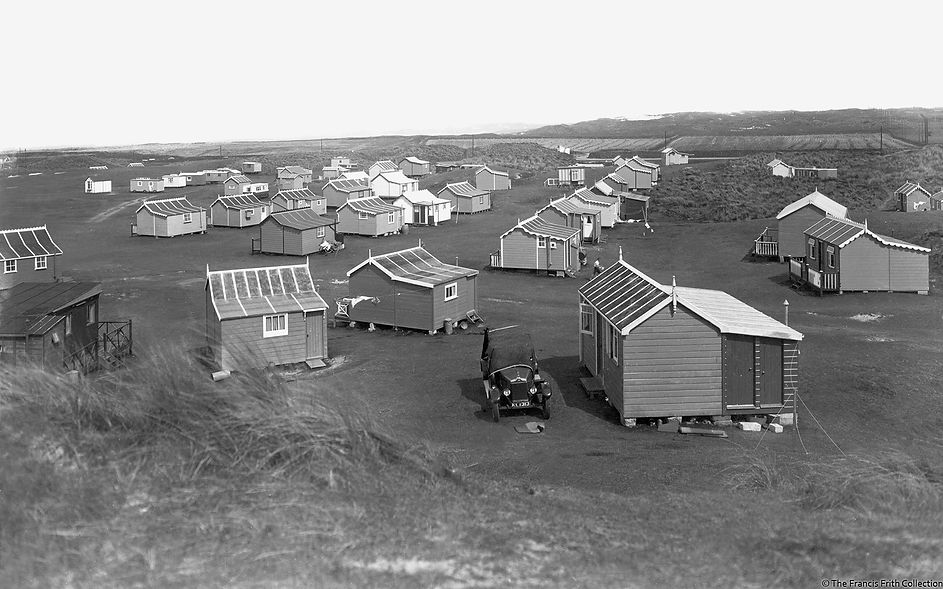Riviere Towans Beach Chalets...
A great place to spend a day.
The Chalets
The beach chalets at Riviere Towans embody a relaxed, vibe that perfectly complements their stunning coastal setting. Nestled among the rolling sand dunes above Hayle Beach, these chalets offer a unique blend of retro charm and modern cool, making them the ideal spot for anyone who loves the beach and soaking up breathtaking sunsets.
Each chalet has its own personality, often featuring weathered wooden exteriors, quirky vintage décor, and cozy outdoor spaces where you can unwind with a good book or a cold drink. The atmosphere here is effortlessly cool yet welcoming—no pretence, just genuine seaside living. Wake up to the sound of waves and the salty breeze drifting in through wide-open windows, then step outside to breathe in the fresh sea air and enjoy uninterrupted views of St Ives Bay.
The beach itself is the heart of life at Riviere Towans. With miles of golden sand stretching beneath the dunes, it’s perfect for long walks, surfing, or simply lounging with your feet in the water. The calm, open space encourages a slow pace, inviting visitors to disconnect and soak in nature’s beauty.
As the day winds down, the chalets become the perfect vantage point for watching the sun dip below the horizon. The sky over St Ives Bay transforms into a canvas of warm pinks, fiery oranges, and soft purples—a magical moment shared by locals and visitors alike. Whether sitting on a deck chair or curled up inside with panoramic windows framing the view, watching the sunset here feels like a small celebration of life’s simple pleasures.
Riviere Towans chalets offer an authentic, stylish beach experience where every sunset feels unforgettable.



The History
For generations, Riviere Towans has been the cherished destination for families seeking the perfect spot to unwind by the sea. It’s a place where time seems to slow, and the rhythms of the waves feel like a gentle reminder to breathe deeply and enjoy the simple pleasures. In fact, our own family has been visiting this beautiful corner of the world for at least five generations—since the early 1920s, to be exact.
Back in the early 1900s, things were much different. There were no modern cottages or permanent homes dotting the landscape. Instead, families would arrive with a sense of adventure and a longing for relaxation. They would pitch tents or bring along horse-drawn caravans, transforming the tranquil towans into a temporary village for the season. It wasn’t about luxury or comfort, but the joy of being together by the sea, with nothing but the sound of the wind, the waves, and the laughter of loved ones filling the air.
For those early visitors, Riviere Towans was a place to escape the everyday and embrace a simpler, slower way of life. And so, it has remained—a home for holidays, woven into the fabric of family traditions for generations.
Continued...
Over time, small changes and additions were made to the land, slowly shaping the cottages at Riviere Towans into the familiar village we recognize today. The steady expansion created more space, and with each modification, the unique outline of the huts began to take form. That distinct shape can still be seen in the older homes scattered across the site, standing as quiet reminders of the past.
In fact, just recently, iron wheels from the original caravans were uncovered beneath some properties during reconstruction, a hidden piece of history that had long been buried beneath the earth.
During the 1930s and 1940s, as tensions in Europe reached their peak, families sought solace in the peace of Riviere Towans, escaping the turmoil and pressure of life in the cities. Here, they found a temporary refuge, a place where the weight of war and worry could be set aside, if only for a while.
While the residents found comfort in their seaside retreat, the surrounding area had become a strategic point of interest. British regiments were stationed in nearby Hayle, and later, American forces set up camp, training on the Towans and fortifying the beaches with gun emplacements that still dot the landscape today. The remnants of these wartime defenses are still visible, silent sentinels to the past.
One of the most harrowing moments came when an attack—possibly aimed at the electric works near the estuary—brought four bombs crashing down on the Towans, not far from the entrance to the site. Miraculously, no one was injured. Through it all, the sense of community held firm. As was the spirit of Riviere Towans, neighbors came together, and life, as best it could, continued. Dances and concerts became regular events, a chance for everyone to lift their spirits and forget, even if just for a moment, the outside world’s chaos.


